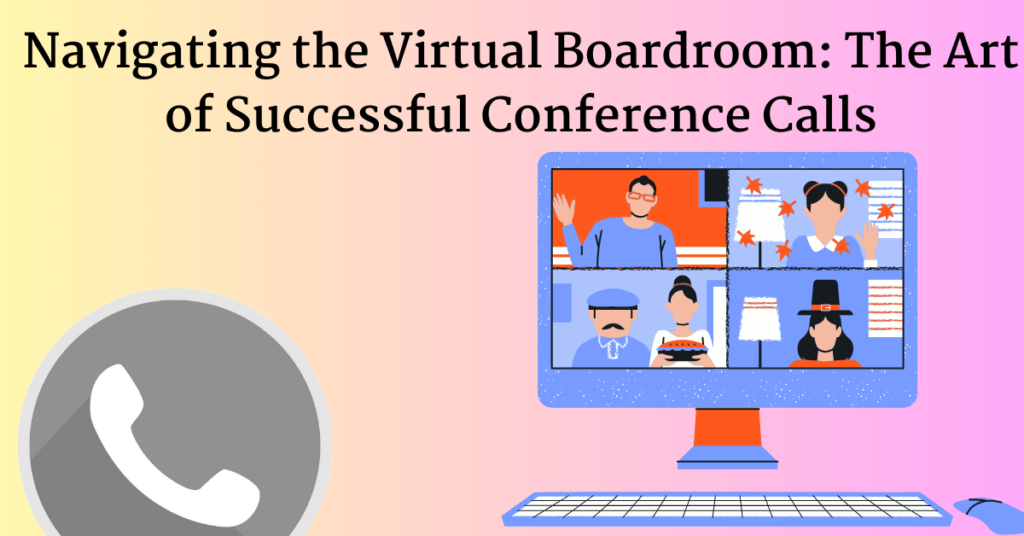In today’s interconnected world, conference calls have emerged as an essential tool for professional communication and collaboration. Whether it’s a global team meeting, a client presentation, or a project update, mastering conference calls is essential for increasing productivity and effectiveness. This article delves into the strategies and best practices for conducting effective conference calls that ensure seamless communication and meaningful outcomes.
Preparation is Key – The Art of Successful Conference Calls
The foundation of a successful conference call lies in thorough preparation. Before the call, ensure that all participants have received the agenda, relevant documents, and any pre-read materials well in advance. Set clear objectives and expectations for the meeting to keep the discussion focused and on track. Additionally, test the conferencing software or platform to address any technical issues beforehand, ensuring a smooth experience for all participants.

Create a Welcoming Atmosphere
As the host or moderator of the conference call, it’s essential to create a welcoming atmosphere that encourages active participation and engagement. Begin the call with a friendly greeting and introductions, allowing participants to briefly introduce themselves if necessary. Establish ground rules for the call, such as muting microphones when not speaking and raising hands to indicate a desire to contribute, to maintain order and minimize disruptions.
Effective Communication
Effective communication is the cornerstone of successful conference calls. Speak clearly and concisely, using a moderate pace and tone to ensure clarity and understanding. Encourage active listening among participants by asking open-ended questions, seeking input from all attendees, and acknowledging their contributions. Use visual aids such as slides or screen sharing to enhance comprehension and reinforce key points, but avoid overwhelming participants with too much information.
Manage Time Wisely
Time management is critical during conference calls to keep discussions focused and productive. Stick to the agenda and schedule time slots for each item, allowing enough time for discussion and decision-making. Keep track of the time and gently guide the conversation back on track if it deviates from the topic. Be mindful of participants’ time constraints and avoid unnecessary delays or tangents that could cause the call to last longer than necessary.
Handle Technical Challenges Gracefully
Despite careful planning, technical glitches and connectivity issues can occur during conference calls. When faced with such challenges, keep your cool and address the problem as soon as possible to reduce disruption. Provide detailed instructions for resolving common technical issues, such as changing microphone settings or reconnecting to the call. Consider having a backup plan in place, such as dial-in numbers or alternative conferencing platforms, to mitigate the effects of technical difficulties. Navigating the World of Finance
Follow Up and Recap
Following the conference call, follow up with participants to review key decisions, action items, and next steps. Send out meeting minutes or a summary of the discussion, emphasizing key points and assignments. Clarify any ambiguities or unanswered questions from the call to ensure future alignment and accountability. Encourage team members to communicate and collaborate on a regular basis in order to move forward and achieve their goals.
Conclusion – The Art of Successful Conference Calls
In today’s fast-paced business world, mastering conference calls is critical for effective communication and collaboration. By implementing these strategies and best practices, you can confidently navigate virtual boardrooms, ensuring that your conference calls are productive, engaging, and impactful. Whether you’re leading a team meeting, giving a client presentation, or facilitating a project update, effective conference call management is essential for driving success and achieving your objectives.
1 thought on “Navigating the Virtual Boardroom: The Art of Successful Conference Calls”